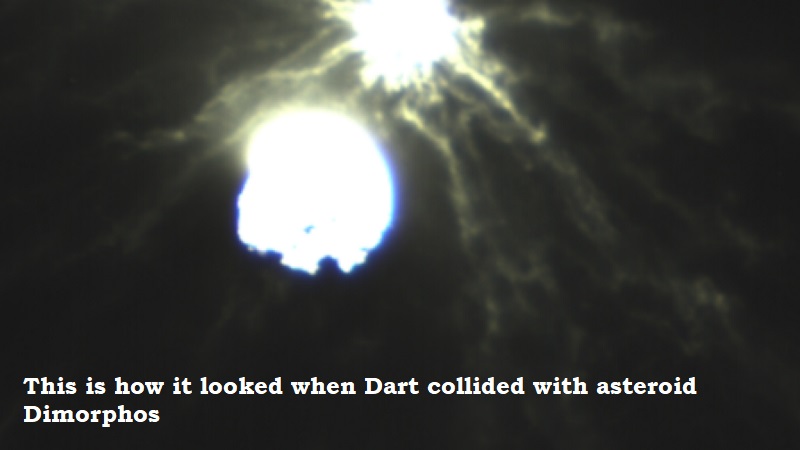
The Doube Asteroid Redirection Test (DART) mission hit its target after roughly 9 million kilometres of space travel. At 24,000 kilometres per hour, the exact collision with the asteroid Dimorphos was strong and precise.
As Earth now has a new tool in its arsenal for defence against extraterrestrial objects heading our way in the future, we have photographs from the collision, which left behind a trail of debris in the darkness of space.
The images of the spacecraft’s impact with the asteroid were captured by the LICIACube probe, which the Italian Space Agency launched along with Dart and placed in orbit.
The tiny spacecraft tracked Dart and recorded its final seconds before it purposefully collided with the asteroid.
The Dart mission was the first to use kinetic impactor technology to impact an asteroid and change its trajectory.
According to scientific speculation, the asteroid’s orbit inside the Didymos binary system will be altered by the impact. This will show how to divert possibly harmful asteroids that are now headed near Earth in the future.
Although the hit was successful, it will take researchers around two months to collect, analyse, and evaluate the data to determine whether or not Dimorphos’ orbit was altered as a result of the collision.

Post Your Comments